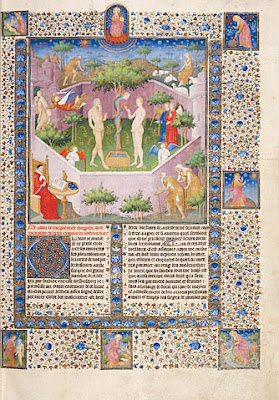 How to annotate Chaucer for understanding and interpretation in “The Merchant’s Tale”
How to annotate Chaucer for understanding and interpretation in “The Merchant’s Tale”
For literal understanding:
- underline words and phrases that you do not understand, and find their meanings in your text's glossary and notes; write their meanings near them on the text. Be prepared to translate a line and sometimes several lines for understanding meaning as opposed to working through the lines word for word. (Sometimes phrases, old disused proverbs, sayings and early grammar can only be understood by looking at lines for contextual understanding.)
For interpretative understanding
- themes: characterisation, stereotypes and individualisation, themes: marriage and the marriage debate, the position of women, blindness and seeing, deception and self deception, appearance and reality, youth and age, etc.
- note the historical and cultural context, arguments, imagery of gardens, animals and time; irony, alliteration, motifs, realism, digressions from the narrative, parallel plots and echoed themes, implied criticism, courtly love, literary contexts, myth and folklore, fate, commonly held beliefs such as lady fortune, superstitions, astrology, the use of “auctorites” including Biblical figures to support arguments, aspects of the form (fabliau –genre and form), realism, apostrophe, satire, social commentary.
The Teller and the Tale
Always establish WHO is speaking and becomes the narrator. What is their attitude to what they are talking about? (Sincere, self-deluding, serious, angry, patronising, obsequious, ironic, etc.) How does the language and imagery that they use inform or colour their views. Are they undertaking a lengthy digression from the narrative? Why? How are themes expressed through the narrators?

No comments:
Post a Comment